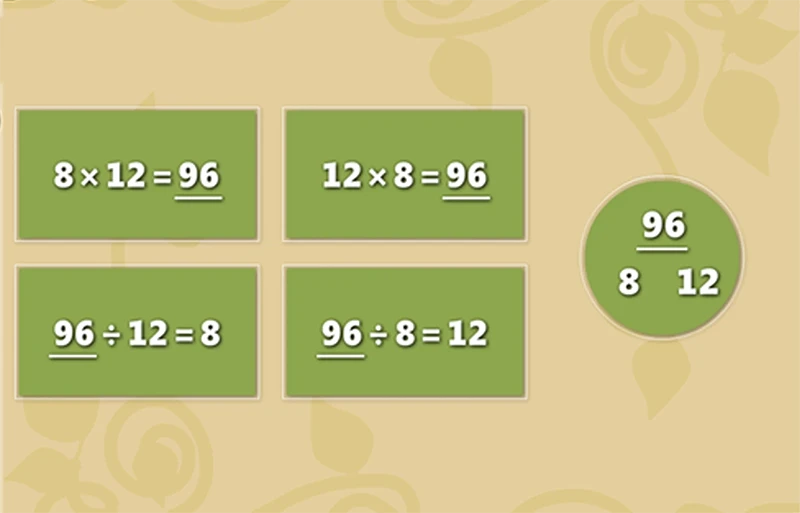
Compare the two: a student learning a new language and a student learning math facts. As a child masters vocabulary and verb tenses in French, they become more equipped to converse and think in that new language. But without the building blocks of the language, a student is stuck when it comes time to ask for directions to the Eiffel Tower, form a unique sentence, or produce complex thinking or opinions.
The same is true with math facts. When students achieve fact fluency, they propel their present and future math success forward by freeing up working memory space.
What is fact fluency in math?
What are math facts? Math facts are simple calculations performed across addition, subtraction, multiplication, and division. But what does fluency mean regarding math facts?
Math fact fluency is the quick and effortless recall of basic math facts in all four operations. When students can retrieve math fact solutions from their long-term memory without conscious effort (or counting on their fingers!), they achieve automaticity with math facts.
For example, a student with multiplication math fact fluency would automatically know that the product of 6 x 7 is 42 without using tally marks, drawing area models, or punching the numbers into a calculator. By understanding this fluently, the child can solve a more advanced problem, such as 5(6 x 7) + 250, with greater accuracy and speed.
Why is fluency important in math?
Fact fluency is important because it frees up students’ working memory. When students can retrieve math facts with little effort, they can learn new skills and devote more time to advanced problem-solving.
Extensive research has uncovered the vital role of fact fluency, both in elementary school and beyond. Fact retrieval speed is a strong predictor of standardized test performance, along with students’ ability to solve word problems and tasks related to data interpretation, mathematical reasoning, and concept problems.
The benefits of building fact fluency
Building math fact fluency in the elementary classroom has many benefits.
Why is it important for students to have a quick recall of basic facts?
In addition to freeing up space in working memory, math fact fluency can increase student confidence. Students who are confident about math can enjoy the subject with less intimidation or math anxiety. Math fact fluency also helps students make fewer mistakes on classwork and tests.
When teachers know their students share an understanding of math facts, they can take their teaching to the next level without having to stop and reteach basic calculations. Mathematical fluency allows teachers to stay closer aligned to their scope and sequence and lesson planning needs. It also gives teachers more autonomy and flexibility to assign complex problem-solving tasks, like group work, word problems, or project-based learning, knowing their students have the foundational fluency skills required for advanced calculations.
How fact fluency enhances math skills and problem-solving abilities
Fact fluency also prepares students for more complex fact-solving. For example, to master their multiplication facts, students first need a firm grasp of addition and subtraction facts. When students know their multiplication and division facts fluently, they can take on advanced math and math skills in later elementary school in addition to middle and high school math.
Practical strategies to improve math fact fluency
Fluency matters, but how can teachers develop it in the classroom?
Effective techniques for building fact fluency
One effective way to build fluency is by using fact families. When students can learn related math facts (or fact families) together, problems become more accessible for them to solve. Fact families also help students understand the nature of inverse operations. See the image below for an example of a math fact family.

Teachers can use hands-on manipulatives, classroom whiteboard practice, skip counting, math centers, game-based technology, and more to build fact fluency.
How Reflex helps students achieve math fact fluency
ExploreLearning Reflex is an adaptive and game-based system that helps students build math fact fluency. Built on a math fact family approach, Reflex continuously monitors each student’s performance to help them build fluency at their own pace, while fun games and rewards boost motivation and confidence. Reflex includes advanced reporting features so teachers and administrators can monitor and celebrate fact fluency progress.
2nd-grade students who scored two or more years below grade level math improved by an average of 11 percentile points when they frequently used Reflex, compared to 5 percentile points with non-users. The students who used Reflex were also significantly more likely to meet or exceed on-grade-level proficiency by the end of second grade than non-users (16% vs 9%).
Are you ready to boost fluency in your classroom?

